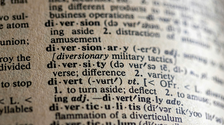Harry
مُعلم محترفPassive vs. Active Learning: Which Works Best for Learning a Language?
Passive learning and active learning are the two main methods that are often mentioned when learning a language. Let’s break down these methods and see how each can help you.
Passive learning is kind of like letting the language casually wash over you. This could be as simple as having the language playing in the background while you do other things or as complex as watching movies or music. It's a relaxed method of getting acclimated to the language's sounds and effortlessly learning a few new words and phrases. The catch? You’re not really working on speaking or writing, which are key to fluency.
Active learning, on the other hand, is all about getting involved. Speaking with natives, doing language exercises, or keeping a record of your language learning journey. Although this method is more demanding, it is essential to be able to speak a language confidently in real life.
So, which one should you choose?
Realistically It’s not about choosing one or the other. A mix of both is usually the best bet. Maybe start your day with a podcast or a show in the language (passive), and then switch to speaking or writing practice with a tutor or language partner later (active). By doing this, you combine the ease of natural language exposure with the effectiveness of hands-on practice.
A mix of passive and active learning is super effective for improving your language skills. Passive methods help you absorb the language, and active practice lets you put that knowledge to work.This combo keeps your learning dynamic and more effective.
Which method do you prefer for learning a new language?
Passive Learning
Active learning
A mix of both
I’m still figuring out what works best for me
0 أجروا الاختبار
٢٤ يوليو ٢٠٢٤ ١٢:٢٤
Harry
المهارات اللغوية
الكتالونية, الإنجليزية, أخرى, الإسبانية
لغة التعلّم
أخرى
مقالات قد تعجبك أيضًا

Top 6 Mistakes to Avoid with Vocabulary Acquisition
23 تأييدات · 4 التعليقات

Navigating Your First Job: Do's and Don'ts in the Workplace
44 تأييدات · 18 التعليقات

What Content to Watch to Acquire Advanced-level Proficiency
75 تأييدات · 48 التعليقات
مقالات أكثر
